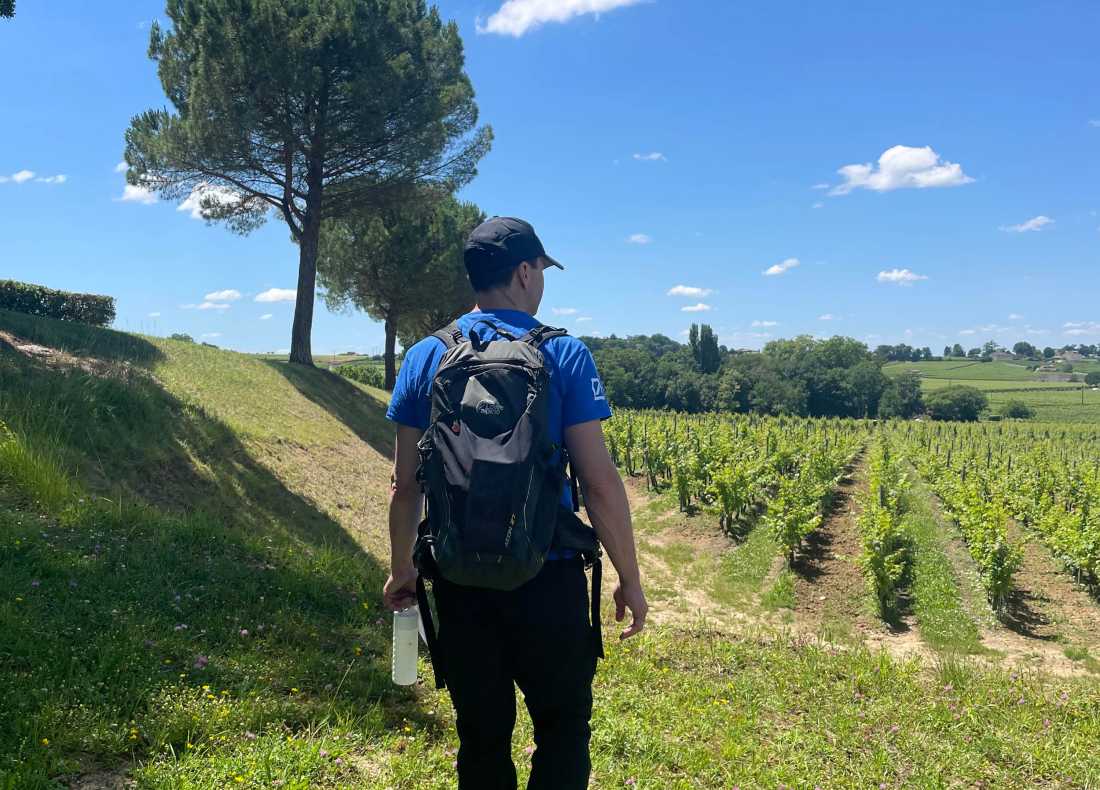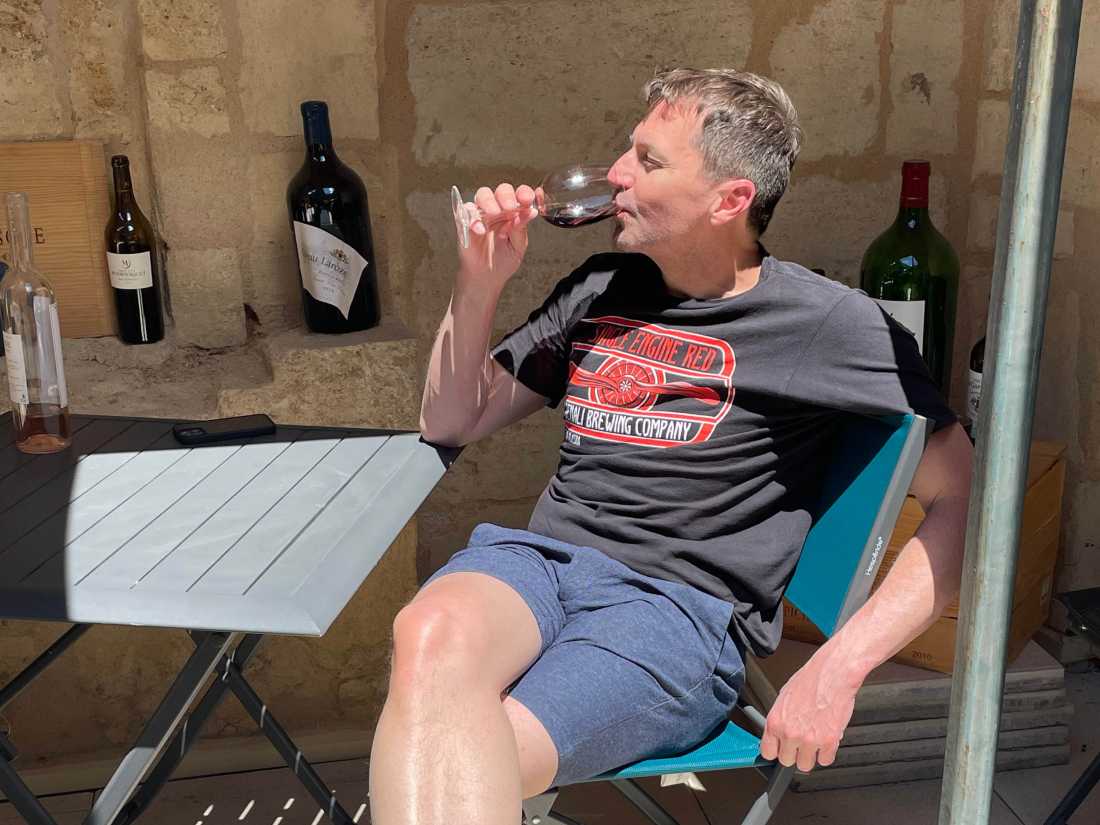If you're looking for a relaxing, scenic walking trip with a healthy dose of wine culture, the
offers a truly French countryside experience. From red to white to sweet wines, the itinerary takes you through the heart of one of France's most iconic wine regions -- Saint-Émilion, Camiran, and Sauternes -- while offering time to enjoy villages, vineyards, and plenty of wine tastings along the way.

Why We Chose This Trip
My husband Scott is a Francophile, and we'd both long wanted to visit Bordeaux and Saint-Émilion. This trip appealed with its leisurely walking pace, two-night stays, and immersive regional experience.

This itinerary offers a unique chance to experience the distinct personalities of three famed wine regions. Saint-Émilion charms with its historic character and prestigious red wines. Camiran, part of the Entre-Deux-Mers area, showcases quiet villages and rolling hills of white wine country. Finally, Sauternes offers a taste of golden-hued vineyards and iconic sweet wines — the perfect finale to a rich sensory journey.
Insider Fact: Bordeaux is currently facing a wine surplus, with a declining international market (especially in China and the UK). Some farmers are being paid to remove vines and switch to crops like corn and almonds.
How hard is it to do the Bordeaux Vineyards Walk?
The grading is rated as Introductory to Moderate. Most of the terrain is flat or gently rolling, though hot temperatures and hard, dry paths through vineyards (often on tractor tracks) can make it more demanding. Forest sections were occasionally overgrown and wet -- long trousers were a must.
Accommodations
Throughout the trip, accommodations ranged from boutique hotels in vibrant historic towns to peaceful rural guesthouses surrounded by vineyards. Expect comfortable rooms, often with rustic charm, and welcoming hosts. Some properties featured modern amenities, pools, or even yoga and wine tasting options. Meals ranged from generous breakfasts to delicious home-cooked dinners, with wine and local produce playing a central role. English was not always widely spoken, especially in rural locations, so a translation app came in handy.
Bordeaux Vineyards Walk: Day by Day
Day 1: Arrival in Saint-Émilion.
We arrived midday and had time to explore, wine taste, and settle in. Our welcome pack included maps, walk notes, and navigation app instructions - an easy-to-use GPS guide we used offline throughout the trip.
Day 2: Saint-Émilion Vineyard Walk (10-15 km)
We walked through Grand Cru vineyards and overgrown forests using yellow and green trail markers. Châteaux are mostly closed on Mondays unless booked in advance, so start early and plan tastings carefully. This walk was exposed and hot, but scenic.
Day 3: Winery Tour & Transfer to Camiran
We joined a guided tour of Couvent des Jacobins, one of Saint-Émilion's oldest wineries. The underground cellars were fascinating -- and free to use for winemakers! After a Monolithic Church tour, we transferred to Camiran.
Day 4: Walk to Caudrot (15 km)
Forests, vineyards, and rural paths led us through small towns to Caudrot. Note: picnic lunches must be booked in advance. We stocked up at a supermarket near the walk's end before returning to Camiran.
Day 5: Walk to Saint-Macaire (10 km)
Today's walk was flat, with limited views due to overgrown riverbanks. Still, we detoured to see the Canal du Midi's start and had fun walking along railway tracks, "Stand by Me" style.
Day 6: Loop Walk to Ste-Croix-du-Mont (8-16 km)
A varied day of vineyard loops, forest paths, and historic sites like a church and tomb park. A 5 pm taxi transferred us to Illats for two nights.
Day 7: Walk from Sauternes to Barsac (15 km)
Our hosts dropped us off in Sauternes to start our favorite walk -- scenic, varied terrain with wine tastings, a Roman road, forests, and streams. We picked up a picnic at the village bakery and enjoyed a relaxed pace through wine country.
Day 8: Departure
Transferred to Cerons station for a direct train to Bordeaux, then caught the Direct Shuttle to the airport (€8, 30 minutes).
Packing Tip: Bring rain gear, a hat, refillable water bottle, and snacks -- many villages have limited shop hours. Wine tastings often require booking in advance.
Final Thoughts
We loved the beginning and end of the trip, especially our time in Saint-Émilion and the Sauternes walk. We recommend timing your trip around harvest season in September for maximum vineyard charm.
If you're after a slower-paced, scenic exploration of French wine country - with good food, charming accommodations, and a splash of history -- this walk will more than satisfy your wanderlust.
How does a walk among the vineyards sound to you? Let us know in the comment section below.